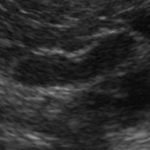Vomiting and anti-emetic therapy in veterinary medicine
Tonya Boyle Brown, DVM, DACVIM
Port City Veterinary Referral Hospital
Vomiting causes alarm and concern across species and is a common presenting complaint in our small animal patients. Causes for vomiting may be mild and self-limiting or associated with serious, potentially life-threatening diseases. While often directly related to the intestinal tract, there are many non-intestinal causes for vomiting that require more extensive investigation for accurate diagnosis and directed therapeutics. An understanding of the physiology behind vomiting and our options for management helps us to determine the extent of diagnostics and therapeutics needed for each patient.
The vomiting reflex
The act of emesis is protective in nature, ridding the body of dangerous substances, or responding to various catalysts. Vomiting is a reflex that can be triggered by both neural and hormonal stimuli from many disorders in the body. It involves three stages including nausea, retching and expulsion of gastric contents. Nausea manifests differently in individuals and may be perceived as hiding, depression, yawning, shivering, licking of the lips, licking of objects, or pica (e.g., eating grass). Excessive salivation and swallowing allow for lubrication of the esophagus with saliva high in bicarbonate to neutralize the acid of the stomach acid as it is expelled. The esophageal peristalsis slows and the lower esophageal sphincter relaxes as the proximal small intestines begin retrograde motion. Retching, contraction of the abdominal muscles and diaphragm, causes increased abdominal pressure and decreased intra-thoracic pressure as the abdominal muscles contract. This pressure change during retching causes the movement of stomach contents up into the esophagus. When the intra-thoracic pressure becomes positive again, the material in the esophagus is expelled out of the mouth as vomitus. It is the second phase of vomiting, retching, that we can use to distinguish vomiting from regurgitation. As material is expelled from the esophagus, breathing is inhibited and the glottis closes to prevent aspiration.
Pathophysiology
Vomiting is initiated by the emetic center of the central nervous system (CNS), a number of nuclei in the medulla oblongata within the brainstem. These nuclei and associated complex nerve pathways are responsible for organizing and triggering the act of vomiting. Known receptors such as 5HT3 (serotonergic), α2 (adrenergic), and NK1(neurokinergic) reside in the emetic center. Stimulation of these receptions may occur through neural pathways, such as peripheral sensory receptors (sight, small, taste) including afferent receptors from the gastrointestinal tract, or via vestibular and hormonal activation of the chemoreceptor trigger zone (CRTZ).
Neural activation of the vomiting center begins with stimulation of afferent vagal, sympathetic, vestibular, cerebrocortical, or nearby nucleus tractus solitarius pathways. Peripheral receptors within the body, particularly within the abdominal viscera, activate these pathways. The duodenum, known as the “organ of nausea” has the largest number of receptors. Vagal afferent pathways may be directly stimulated by disorders within the gastrointestinal tract. Smooth muscle within the intestinal tract and vagal afferent neurons contain large quantities of 5HT3 and NK1 receptors. The 5HT3 receptors are stimulated by serotonin, and the NK1 receptors are stimulated by substance P from enterochromaffin cells in response to inflammation or cytotoxic elements. Additional afferent signals may be through sympathetic nerves sent from receptors located within the kidney, uterus, liver, pancreas, peritoneum, urinary bladder and cardiac vessels. The glossopharyngeal nerve transmits signals from the pharynx and the tonsillar fossa. Disease within the CNS stimulates the emetic center directly via NK1 cells within the nucleus tractus solitarius pathway. The higher brain centers, the cerebral cortex and limbic systems, are capable of initiating emesis in three ways. Inflammation, hydrocephalus or neoplasia will directly stimulate the vomiting center. Secondly, fear, stress, excitement or pain will cause psychogenic stimulation of the vomiting center. Thirdly, head injuries or increased intracranial pressure will cause traumatic stimulation of the vomiting center. When the emetic center is stimulated by afferent neurons from the gastrointestinal tract, the higher centers of the brain, vestibular apparatus or the CRTZ, it sends signals that coordinate vomiting through efferent motor neurons.
Humeral factors in the blood stimulate the CRTZ, a set of centers located on the floor of the fourth ventricle in the brainstem. The CRTZ does not have a blood-brain barrier, allowing stimulation from chemicals within the circulation. Drugs, uremic toxins, acid-base disorders, electrolytes, infection and metabolic disorders stimulate the CRTZ to transmit signals to the vomiting center. Receptors located within the CRTZ include dopaminergic (D2), cholinergic (M1), histaminergic (H1), serotonergic (5HT3), adrenergic (α2) and neurokinergic (NK1). Cats have less developed D2 and H1 receptors in the CRTZ than dogs which explains their minimal reaction to apomorphine and histamine. Cats have increased α2 receptors compared to dogs, which makes xylazine, an α2-agonist, a very effective emetic in our feline patients. The vestibular apparatus passes through the CRTZ before stimulating the vomiting center. Inflammatory conditions of the pathway, motion sickness or cerebellar lesions stimulate M1, H1 and NK1 receptors within the vestibular apparatus.
Causes and clinical diagnostic approach
Obtaining a complete and thorough history is essential to determining how aggressive to be in the diagnostic work up and therapeutic approach. Signalment, history, a description of the vomiting (to rule out regurgitation, gagging, coughing, retching or dysphagia), travel history (for infectious disease), medications history (for side effects, toxicity and NSAID exposure), possible ingestions of toxic substances or foreign bodies, chronicity and concurrent clinical signs are all important to determine an appropriate work up. Vomiting has a tremendous number of causes. Ettinger provides helpful diagnostic flow diagrams for our patients that present with acute onset of vomiting or a chronic history of vomiting.
Treatment
Control of vomiting is important in preventing dehydration, electrolyte derangements, aspiration pneumonia and allows for return of nutritional support. To treat our vomiting patients most effectively, it is important to first determine the cause of vomiting. Reflexive use of anti-emetics in veterinary medicine often masks the underlying disease and risks delaying appropriate diagnostics and therapeutics. Gastrointestinal infections and toxin elimination may be prolonged by inappropriate anti-emetic therapy that slows gastrointestinal motility. Rational use of anti-emetics is warranted, and an understanding of how anti-emetics work is helpful in making treatment decisions on a daily basis.
Antihistamines
Antihistamines block cholinergic and histaminic nerve transmission of the vomiting center from vestibular stimulation. This class includes diphenhydramine, dimenhydrinate and meclizine. Used most commonly for motion sickness, these drugs block H1 receptors. Because cats do not have H1 receptors in their CRTZ, antihistamines are not effective against vomiting in cats.
Substituted Benzamides
These drugs work in different ways. Metoclopramide blocks dopamine receptors (and should not be given to patients receiving dopamine) in the CNS and 5HT3 serotonergic receptors at high doses. It activates 5HT4 receptors at the same time causing increased lower esophageal sphincter tone and gastric motility. Cisapride also activates 5HT4 neuronal receptors causing gastric emptying. Both metoclopramide and cisapride should be avoided in cases where gastrointestinal obstruction is a possibility as the increased motility may lead to perforation.
Serotonin Antagonists
These drugs specifically inhibit 5HT3 receptors located along the vagus nerve and in the CRTZ. These receptors are stimulated by serotonin released from enterochromaffin cells within the small intestine in response to mucosal damage. This explains why ondansetron and dolasetron are effective at controlling vomiting caused by radiation and chemotherapy in dogs and cats, but are not effective at controlling motion-sickness induced vomiting. Other indications include gastritis, pancreatitis, parvovirus and uremia.
Opioids
Butorphanol has been shown to have some anti-emetic properties by blocking К and Ω receptors located within the vomiting center in both dogs and cats.
Phenothiazines
Chlorpromazine and acepromazine have dopamine receptor blacking and histamine receptor properties in the CRTZ at low doses. At higher doses, they have been shown to have anticholinergic properties within the vomiting center. Adverse effects, especially in dogs are common and fluid therapy should be given concurrently to compensate for the vasodilatory effects of these drugs.
Neurokinin Antagonists
Neurokinin (NK1) antagonists are now commonly used in veterinary medicine for vomiting. Maropitant acts by inhibiting substance P in the central nervous system. Substance P is the main neurotransmitter involved in stimulation of the vomiting center. Maropitant is therefore effective against both peripherally and centrally mediated vomiting.
Other Drugs
Centrally mediated vomiting may also be controlled by other medications. Yohimbine works in both dogs and cats by pure α2-adrenergic-antagonist action. Diazepam is thought to have effect on the vestibular system and controls nausea and vomiting in humans. Studies in animals models show diazepam may also be effective in our patients. Corticosteroids have anti-emetic effect in people and dogs undergoing chemotherapy. While the physiology is poorly understood, the mechanism is believed to include the activation of receptors in the emetic center within the medulla, especially in cats. Propofol may reduce serotonin concentration in the CRTZ by 5-HT3 serotonin receptor antagonism and Υ-aminobutyric acid activity. This alkylphenol derivative is used for chemotherapy induced vomiting control in people when seratonin antagonists or dexamethasone are not effective. It’s anti-emetic properties are uncertain in veterinary medicine. Mirtazapine, an antidepressant piperazinoazepine medication, is also used for chemotherapy-induced nausea in humans. It is more commonly used as an appetite stimulant in dogs and cats. It exerts anti-emetic effects by blocking presynaptic α2-receptors, blocking serotonin receptors, acting as a strong 5-HT2 and 5-HT3 serotonin receptor antagonist, acting as a weak 5-HT1 serotonin receptor antagonist and by exhibiting H1-histamine antagonist activity.
Conclusion
Anti-emetic therapy is implemented by many of us daily in veterinary medicine. Determination of the cause of vomiting in each patient is essential for directed and appropriate anti-emetic therapy. A thorough history, physical examination and diagnostics to determine the cause of vomiting must be performed as much as possible for each patient in order to safely and effectively manage vomiting. Correct use of current dosing regimens (found easily in veterinary formularies) should also be verified. In patients where the cause remains undetermined and the vomiting remains refractory, combinations of anti-emetics may be used, but the importance of further diagnostics to obtain a definitive diagnosis must be emphasized.



